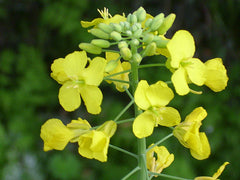Lablab Purpureus, Lablab Bean, Hyacinth Bean
The hyacinth bean is commonly cultivated in warm temperate and tropical climates for its edible seed. Plants are fairly fast-growing, young pods are ready to harvest from 70 - 120 days after sowing.
Nitrogen fixing. Hardy to zone 10.
Easily grown in an ordinary garden soil so long as the temperature is sufficient. Succeeds in relatively poor soils so long as they are well-drained. Plants grow best at temperatures between 28 - 30°c though they tolerate mean temperatures as low as 9°c. Prefers a rich moist soil in a warm sheltered position.
A perennial species, it is not cold-hardy in Britain, though it is occasionally grown as an annual in the ornamental garden. It requires a minimum temperature of 7 - 10°c if it is to survive winter conditions.
Edible uses
= Note that the raw seed is poisonous, I do not recommend that you eat the seeds. The following is purely for information purposes.=
The mature seed is edible as long as it is thoroughly cooked. It has a mild flavour, is rich in protein and can be used as a staple food. The seed can also be prepared as 'tofu' or be fermented into 'tempeh' in the same way that soya beans are used in Japan.
The seed can also be sprouted and eaten raw, when it is comparable to mung bean sprouts.
The tender young seedpods and immature seeds can be eaten raw or cooked. They can be used as a green vegetable like French beans. They are also used as a curry vegetable. The immature seedpod contains 3.2% protein, 0.8% fat, 5.4% carbohydrate, 0.81% ash. It is rich in vitamin B1.
Leaves - they must be cooked. They can also be dried for later use. The leaves are used as a greens just like spinach. They contain up to 28% protein (dry weight?).
Flowers - raw or cooked in soups and stews.
Root - large and starchy.



![Photo By User: Carstor (Own work (own picture)) [GFDL (http://www.gnu.org/copyleft/fdl.html), CC-BY-SA-3.0 (http://creativecommons.org/licenses/by-sa/3.0/) or CC-BY-SA-2.5-2.0-1.0 (http://creativecommons.org/licenses/by-sa/2.5-2.0-1.0)], via Wikimedia Commons.](http://www.openpollinated.co.uk/cdn/shop/products/1_2c497e85-b5e9-4bf4-ab29-f2fdc3d9e689_thumb.jpeg?v=1510586878)
![By Bruce Ackley, The Ohio State University, Bugwood.org [CC BY 3.0 (http://creativecommons.org/licenses/by/3.0)], via Wikimedia Commons](http://www.openpollinated.co.uk/cdn/shop/products/Amaranthus_green_medium.jpg?v=1510586902)


![By Koba-chan (Own work) [GFDL (http://www.gnu.org/copyleft/fdl.html), CC-BY-SA-3.0 (http://creativecommons.org/licenses/by-sa/3.0/), CC BY-SA 2.5 (https://creativecommons.org/licenses/by-sa/2.5) or CC BY 2.5 (http://creativecommons.org/licenses/by/2.5)], via Wikimedia Commons](http://www.openpollinated.co.uk/cdn/shop/products/Fagopyrum_esculentum_flower_jp_medium.jpg?v=1512568112)

![Evelyn Simak [CC BY-SA 2.0 (http://creativecommons.org/licenses/by-sa/2.0)], via Wikimedia Commons](http://www.openpollinated.co.uk/cdn/shop/products/A_crop_of_red_clover_adjacent_to_Mill_Lane_near_The_Carr_-_geograph.org.uk_-_548507_medium.jpg?v=1510586756)
